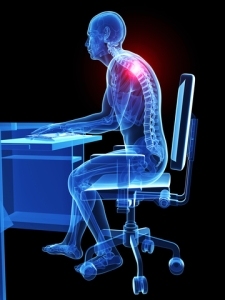Do you have a tight psoas? Have you been stretching it unsuccessfully? Are you tired of being unable to get it to release in any meaningful way? Then you’re in the right place.
A chronically tight psoas can contribute to;
Low back pain, groin pain, hip flexor pain, difficulty/pain when trying to stand in a fully upright posture, buttock pain, radiation of pain down the leg, pelvic pain, limping or shuffling stride when you walk.
Chronic psoas pain and/or tightness is often the result of the muscle (or muscles) simply being in a constant state of contraction. That just means it is constantly tensed to some degree. There are any number of reasons why that might be the case, too much sitting, an injury, a fall or slip, an emotional event, etc.
When any muscle is constantly tense it creates a sensory motor problem, in Somatics we call this Sensory Motor Amnesia (SMA). If you cannot fully contract AND relax a muscle or muscle group you cannot use it properly, as it means you do not have full control over it. Now you have a muscular dysfunction. And if the muscle in question is the psoas, you have a psoas dysfunction.
It’s pretty easy to imagine how any muscle that is constantly tense would eventually feel stiff, sore and make you move less well and less freely.
It’s also easy to imagine that a muscle that is constantly contracted would be tired and fatigued. And a tired muscle is a weak muscle. Anyone who has ever exercised at all can attest to that. At some point, your muscles fatigue and they can no longer exert the same amount of force. They feel weaker.
Now, any muscle that is constantly tensed is being held in that contracted state by your unconscious brain. So stretching it is not going to help. You have to change the order/command/output coming from the brain. Instead of constantly telling the psoas to tense or tighten, you want to tell it to relax and lengthen. Hmmm…. interesting. But how do we do that?
Well you don’t do it by stretching, or foam rolling or painfully pressing on trigger points. While these strategies may provide some temporary relief, they don’t change that output from the brain. So the tightness comes back pretty quick as the brain is still telling the muscles to contract.
Okay, so what else can we do?
Well, what if you contracted/tensed your tight psoas muscle on purpose? Made it even tighter than it already is. By tightening it voluntarily and deliberately, wouldn’t you be re-establishing your conscious control over it? Yep! And then once you had contracted and tightened it deliberately wouldn’t you be able to slowly and carefully CEASE contracting it? Why yes, yes you would. And once you had relaxed the muscle deliberately wouldn’t it feel more comfortable? Absolutely.
In Somatics we call this process, deliberately contracting muscles, then slowly relaxing them; pandiculating. It’s easy to do and it works fast.
You can apply pandiculation to all and any muscles of the body. Including your psoas! To assist you in that regard, I’ve made a playlist of all three of my Somatic Movement tutorial videos that address the psoas (and the low back and hip flexors too!) If you’d like to learn how easy it is to pandiculate your way to a soft, relaxed and comfortable psoas, you can check out the playlist below. Any one of these movements will do a good job of releasing a tight psoas, or you can combine all three for more complete learning. And I’ve added a bonus movement at the end of the playlist that improves control of the hips and legs that should feel really enjoyable to practice after releasing both your psoas.
If you find these videos helpful, please like, comment and share.
Need help with a specific problem? Want to Learn Somatics faster? Book an online appointment with me here: Online 1-1
Thanks for reading and I’ll see you next time!








